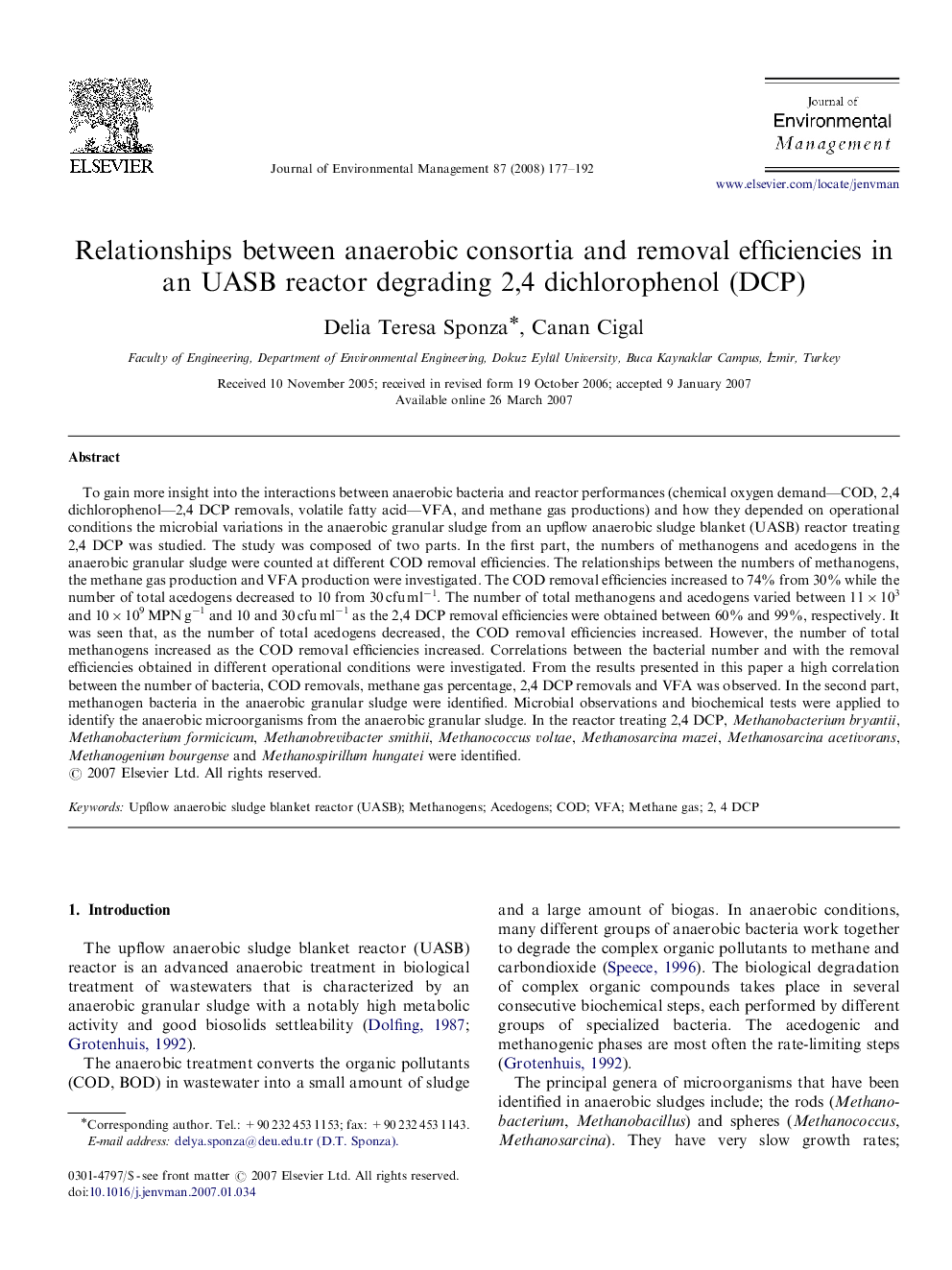| Article ID | Journal | Published Year | Pages | File Type |
|---|---|---|---|---|
| 1058155 | Journal of Environmental Management | 2008 | 16 Pages |
To gain more insight into the interactions between anaerobic bacteria and reactor performances (chemical oxygen demand—COD, 2,4 dichlorophenol—2,4 DCP removals, volatile fatty acid—VFA, and methane gas productions) and how they depended on operational conditions the microbial variations in the anaerobic granular sludge from an upflow anaerobic sludge blanket (UASB) reactor treating 2,4 DCP was studied. The study was composed of two parts. In the first part, the numbers of methanogens and acedogens in the anaerobic granular sludge were counted at different COD removal efficiencies. The relationships between the numbers of methanogens, the methane gas production and VFA production were investigated. The COD removal efficiencies increased to 74% from 30% while the number of total acedogens decreased to 10 from 30 cfu ml−1. The number of total methanogens and acedogens varied between 11×103 and 10×109 MPN g−1 and 10 and 30 cfu ml−1 as the 2,4 DCP removal efficiencies were obtained between 60% and 99%, respectively. It was seen that, as the number of total acedogens decreased, the COD removal efficiencies increased. However, the number of total methanogens increased as the COD removal efficiencies increased. Correlations between the bacterial number and with the removal efficiencies obtained in different operational conditions were investigated. From the results presented in this paper a high correlation between the number of bacteria, COD removals, methane gas percentage, 2,4 DCP removals and VFA was observed. In the second part, methanogen bacteria in the anaerobic granular sludge were identified. Microbial observations and biochemical tests were applied to identify the anaerobic microorganisms from the anaerobic granular sludge. In the reactor treating 2,4 DCP, Methanobacterium bryantii, Methanobacterium formicicum, Methanobrevibacter smithii, Methanococcus voltae, Methanosarcina mazei, Methanosarcina acetivorans, Methanogenium bourgense and Methanospirillum hungatei were identified.
